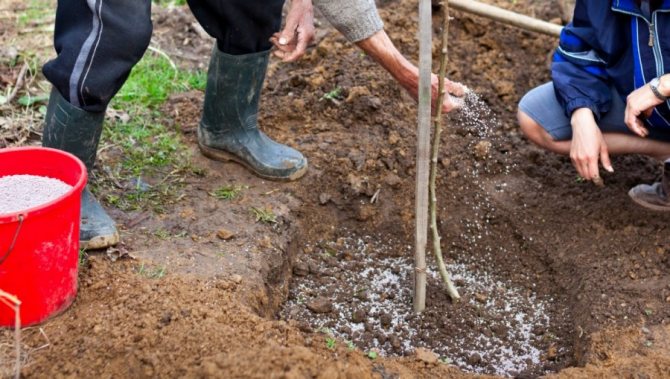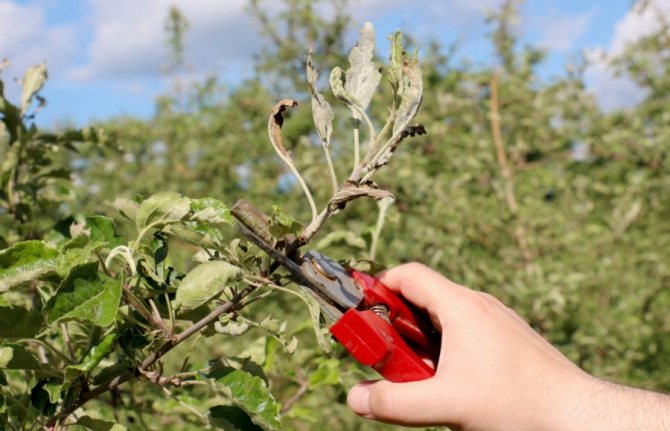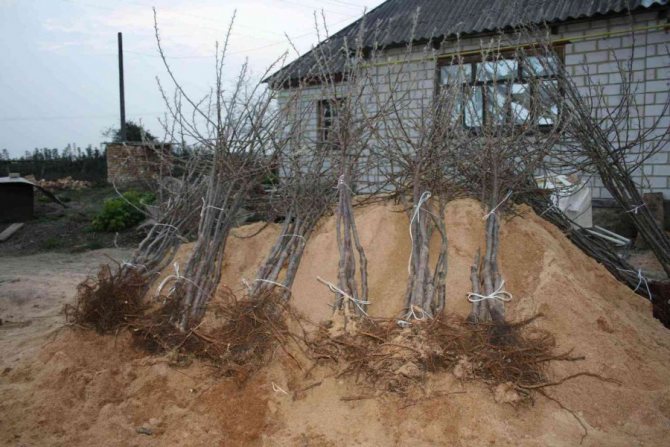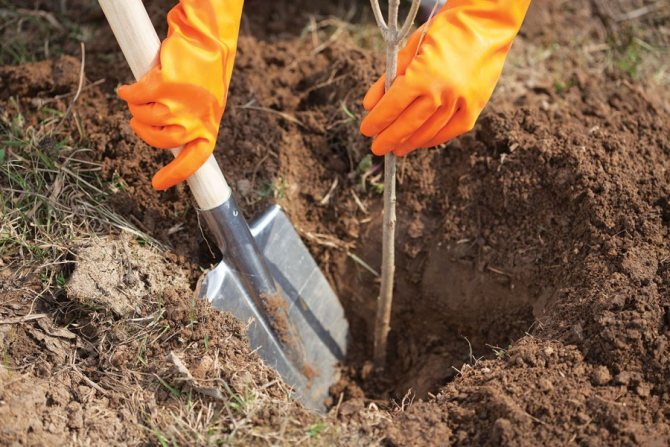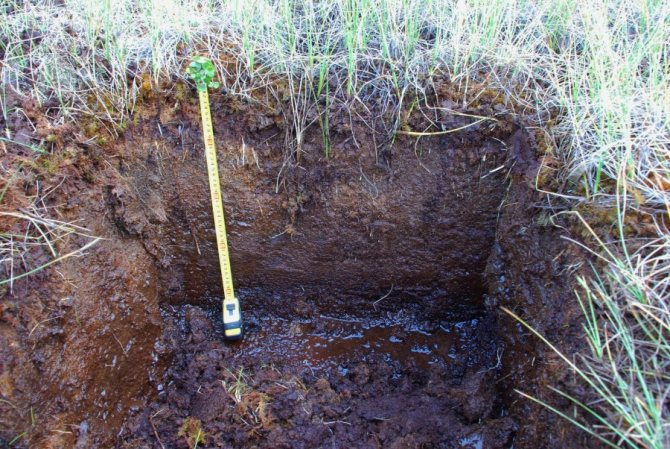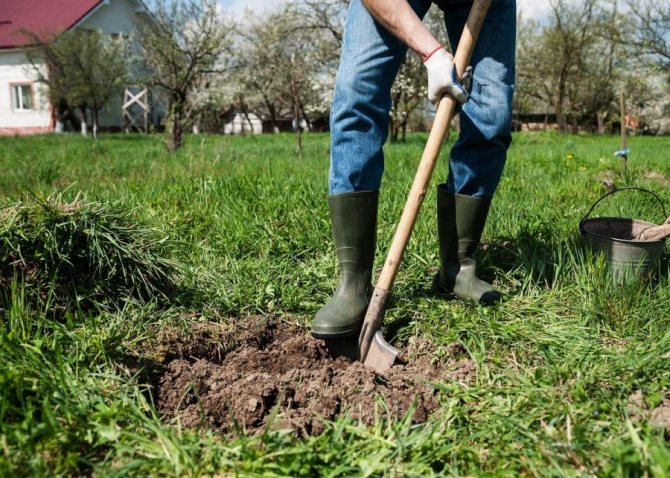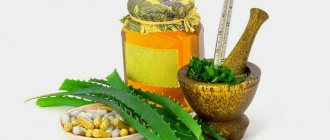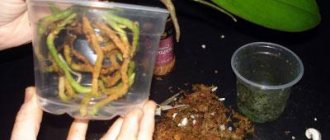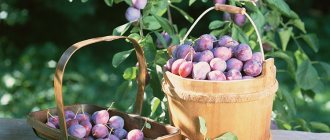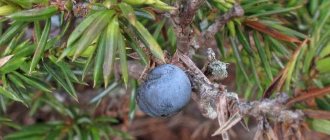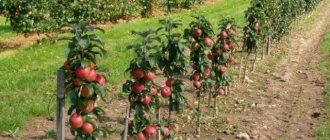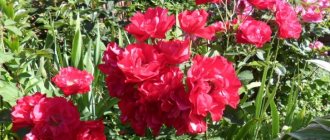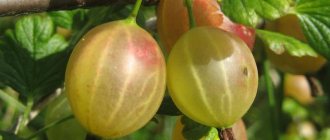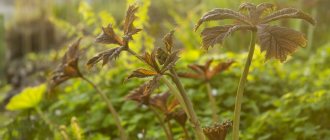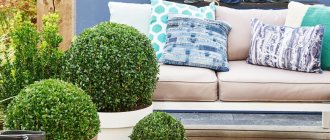When planting a garden, we imagine how beautiful the trees will grow, and their branches will bend under the weight of the fruit. In practice, it may happen that some disease or pest attacks our trees, and dreams of high yields burst like a soap bubble. We present an abbreviated alphabet of pests and diseases of apple trees - a description with photographs, methods of treatment and prevention.
When growing apple trees, prevention is necessary, which largely limits the occurrence of certain diseases and attacks of pests.
Summer varieties
Summer varieties of apple trees are intended mainly for fresh consumption. Such varieties bear fruit throughout the summer, and gardeners look forward to the ripening of the fruit to feast on the tasty, juicy fruit.
White filling
The variety White filling has a long history. Its appearance is associated with folk selection. It is believed that the variety originated in the Baltic States and soon spread throughout Europe. Some adherents are convinced that this is an old Russian variety.
The trees are of medium size, rarely exceeding 4-5 m. The crown is pyramidal, becoming rounded over time. The bark is rough, light gray in color. Leaves are medium, elliptical in shape. The fruits of a young apple tree reach 120-150 g in weight, apples of adult plants weigh about 60 g. The shape of apples is round, the peel is green, eventually acquires a white tint. The peel is thin, the flesh is tender.
The first fruits appear 5-6 years after the seedling is planted. The average yield per young tree is about 200 kg. Harvesting takes place at the beginning of August. After planting a seedling, it is important to provide it with constant moisture.
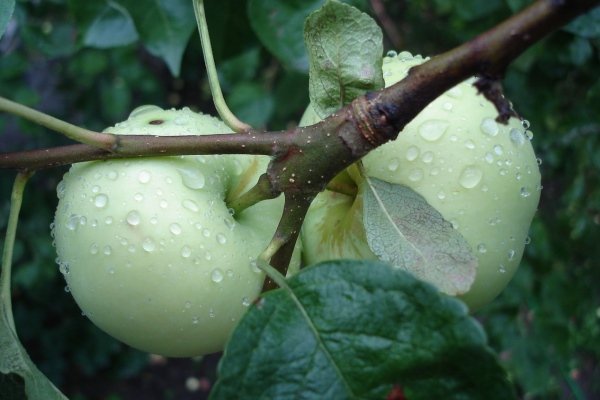
Folding
It is an early summer apple variety obtained by natural pollination. It is believed that his homeland is the Baltic States, where the variety appeared at the beginning of the 19th century.
The apple trees are medium in height. Young plants have a wide, pyramidal crown, which becomes rounded as the tree matures. The bark is gray. The shoots are elongated. Leaves are gray-green, slightly flattened, flat.
Fruits are of medium size, weighing from 80 to 100 g, sometimes up to 180 g. Apples are slightly flattened, rounded-conical. The surface is ribbed, the peel is pale, greenish-yellow, there is no blush. The peel is tender, thin, the pulp is juicy, aromatic.
The fruits ripen early: in the regions located in central Russia, apples appear in early to mid-August, in the southern regions - at the end of July. Once removed, the fruit can be stored for no more than 2-3 weeks in a cool room.
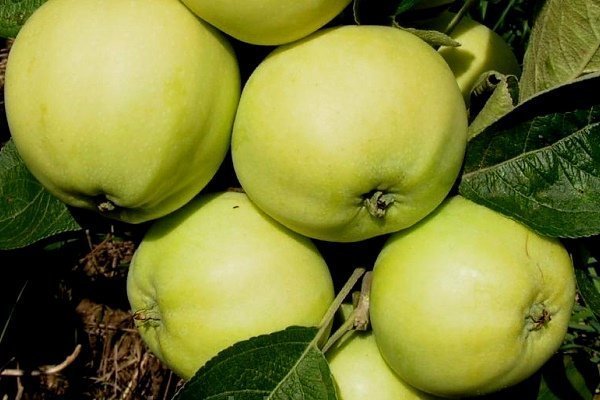

Candy
The variety was bred in the 40s of the last century in the city of Michurinsk. When crossing, two varieties were used - Korobovka and Papirovka. There are practically no analogous varieties in the whole world.
The plant is powerful, tall, grows quickly. Already at the age of three, the tree reaches up to 3 meters in height. At a young age, the crown is narrow, with aging it becomes spreading, wide-pyramidal. Leaves are medium to large, dark green in color. Fruits are round, small, their weight does not exceed 100-150 g. The peel is dark pink with a red tint, there are many white subcutaneous dots. The pulp is creamy, juicy, honey-candy taste.
After harvest, fruits are stored for 3-4 weeks in a cool place. The yield of the variety is good, annual.About 50 kg of apples are removed from a tree aged 6-9 years. In the first few years, caring for a seedling consists of regular watering.


Grushovka Moscow
The Grushovka variety is a natural selection of apple trees. This variety is more than two hundred years old. In 1797, the famous scientist A. Bolotov described the apple tree in detail in his scientific work.
The trees are spreading, tall, their height reaches 7 m. Fruiting with good care lasts about 60 years. An adult tree is characterized by a spherical crown shape, in a young plant it is conical. The bark is yellow-orange in color. Fruits are small, weighing about 70 g, more weighty specimens are rarely found - 100-120 g. The peel is ribbed, thin, yellow or green. The pulp is juicy, snow-white, the taste is sweet and sour, the smell is pleasant.
Fruiting occurs 5 years after planting. After ripening, the fruits are stored for no more than 3-4 weeks. Harvest already at the beginning of August, less often at the end of July. During the season, from one adult tree is harvested from 100 to 200 kg of apples.


Mantet
It is believed that the homeland of this variety is Canada. It was obtained by free pollination of Grushovka Moskovskaya. But some gardeners are convinced that the variety is Russian.
The plant grows to a height of no more than 4.5 m. It has a round or oval crown, not thickened. The leaves are large, leathery, with a glossy surface, of a dark green hue. The leaf plate is characterized by an elliptical shape. Flowering occurs in mid-May. The fruits are small, weighing from 90 to 180 g. The shape of the apples is conical, oblong-rounded. The peel is firm, thin, smooth, yellow-green or yellow in color. The pulp is white with a slight pink tint, juicy. The aroma is not perceptible, the taste is sweet with a slight sourness.
The first crop is harvested by the third year after planting. From a young apple tree they get 20-65 kg, from an adult plant - up to 70 kg. Proper care will extend the fruiting of the tree up to 50 years. Fruit ripening occurs in mid or late July and early August. The shelf life is no more than 2 weeks.
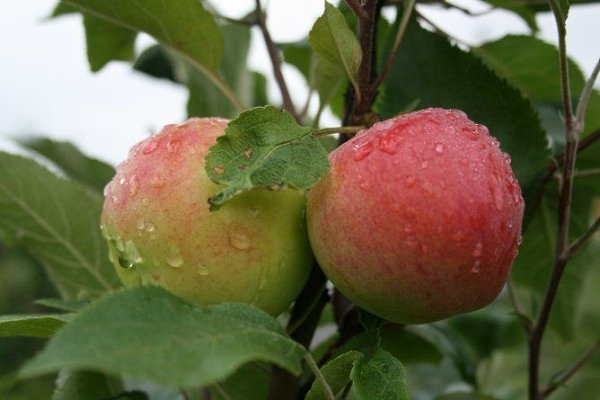

Root cancer


The causative agent of this disease is a rod-shaped bacterium. The disease spreads rapidly, infecting almost all fruit trees within a radius of several hundred meters.
Symptoms


As one could understand, the first stop of the disease is the roots.
- juvenile tumors that become gray-white, soft;
- as a rule, they will be noticeable as soon as they become the size of a pea;
- as the growths develop, the growths can grow up to twelve centimeters, they acquire a brown color;
- infected trees develop rapidly at first, but then they show an inhibition of development;
- infected seedlings often die.
Rod-shaped bacteria live in the soil.
They penetrate into cells through wounds on tree roots. In hot conditions, they develop for about 1.5 months. The growths generally last no more than one year, most often they die due to other microorganisms.
Methods of control and prevention


- Prevent tree infestation (Choose areas that are protected from disease for planting).
- It is necessary to sow fertilizers that improve the soil.
- When digging up seedlings, you need to inspect them, remove growths and burn them.
- The root system must be disinfected (1% copper sulfate solution).
Autumn varieties of apple trees
Autumn varieties of apple trees are preferred by gardeners who sell fruits after harvest. Such varieties ripen in autumn, can be stored for a long time without losing their external qualities.
North synap
The variety was obtained as a result of free pollination by the breeder SI Isaev, who used the seed material of the Kitayka Kandil variety.
A vigorous, powerful tree with a wide-pyramidal thin crown. The bark is gray-brown. The height of an adult tree reaches 7 m.The leaves are small, with a glossy surface and a wide shape, of a dark green, slightly grayish hue. The fruits are medium in size, have a rounded-conical shape, reaching 110-130 g in weight. The peel is green, with a brownish-red blush. There are numerous, light subcutaneous points. The white pulp is juicy, the taste is sweet with pleasant sourness, the structure is dense and fine-grained.
Fruiting of a tall tree occurs 5-6 years after planting. Dwarf trees begin to bloom for 2 years. The yield is high - up to 150 kg of apples are harvested from an adult tree.


Borovinka
The variety was first described at the beginning of the 19th century by A.T. Bolotov. Scientist M. V. Rytov described the Borovinka variety more than 150 years ago. The variety was liked by the North Americans, who began to grow it on their plots. They also named the Oldenburg apple tree.
The tree can grow up to 5 m in height. The bark has an olive tint. The leaves are oval, dark green in color. Fruits are round, with a smooth surface and medium size, their weight does not exceed 90 g. The pulp is juicy, granular. The peel is smooth, light green with pink streaks. The taste is more sour than sweet.
Fruiting occurs in the 4th or 5-10th year after planting. At the age of ten, the plant brings good yields - on average, 60-75 kg of fruits are harvested from one tree. At the age of 25-30 years, the plant can yield yields of up to 200 kg.
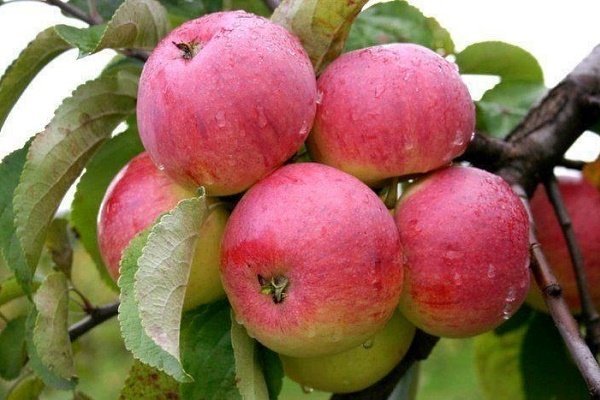

Idared
It is a foreign variety of American origin. When crossing, breeders used two types of apples - Jonathan and Wagner. The Idared variety was obtained in 1935. Due to its good productivity and commercial qualities, the variety has become popular not only in the United States, but also in Russia.
Idared is a vigorous, autumnal variety with mixed fruiting. In adulthood, the height of the apple tree reaches 3-5 m. The plant has a wide, oval or spherical crown. The bark is grayish brown, smooth. Leaves are medium, elongated, with pointed edges, dark green shade. The fruits are round, medium in size, their weight reaches 140-190 g. The peel is pale green, thin, smooth. There are few large subcutaneous points. The creamy pulp is firm, firm and juicy. The aroma is weak, the taste is sour-sweet.
Fruiting occurs 5-6 years after planting. Fruits are harvested at the end of September before the first frost. About 30 kg of fruits are harvested from a young tree, and up to 90 kg of apples can be removed from a plant aged 15 years. Fruits are stored for about 6 months.


Mac
The Macintosh variety attracts with its history of appearance. In 1796 in the state of Ontario, a certain John Mackintosh acquired a farm. While clearing the garden, he found several apple tree seedlings. Having transplanted them to a new place, the plants died, but one apple tree took root, receiving the name in honor of the farmer.
The tree is medium-sized, the crown is spreading, rich. The leaves are small, ovoid, light green in color. The fruits are large, weighing up to 180 g. The peel is light yellow, there is a slight blush and carmine stripes. The rind is smooth, shiny, dense, but thin. White pulp, juicy, aromatic. The taste of the fruit is sweet and sour, pleasant.
Fruit ripening is non-simultaneous. The first fruits ripen in August, the plant bears fruit until the end of October. Up to 200 kg of apples are harvested from one plant, sometimes indicators reach 300 kg. When stored in a cool room, the fruits are stored until spring without losing their taste and appearance.
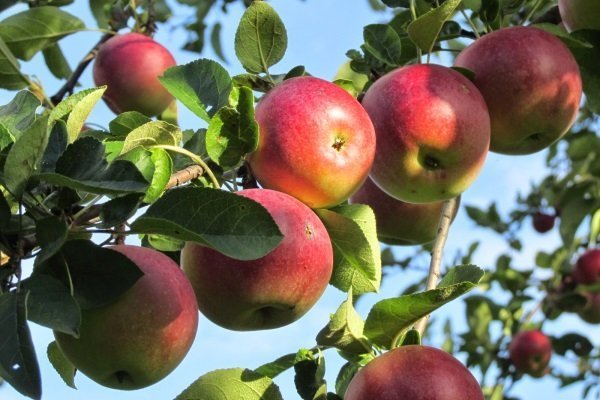

Bolotovskoe
The apple variety was bred by breeder Evgeny Nikolaevich Sedov in 1977. The purpose of the breeding was to develop a variety with increased resistance to scab fungus. This was achieved by hybridizing the Skryzhapelkh 1924 variety.
Plants have a spherical crown, not thickened. The height of the trees is above average, the seedlings grow quickly and develop well.The bark is smooth. The leaves are elongated, dark green in color. The fruits are large, characterized by a flattened shape. The weight of one apple reaches up to 160 g. At the stage of technical maturity, the peel is light yellow, with full ripeness, a pink-red blush appears. The peel is oily, the flesh is juicy, dense, of a pale green hue.
The plant begins to actively bear fruit from 7-8 years after planting the seedling. Fruits are harvested in mid-September. Up to 200 kg of apples are harvested from one adult plant. If stored properly, fruits do not lose their qualities until mid-February.


Care
Maintenance of these trees is minimal. They don't need the same pruning as their garden cousins. It is imperative to remove only dry or damaged branches. It is also advisable to thin out the crown a little.


Pruning is the main resuscitation measure for a tree
Watering is required only after planting during the rooting period of the tree. Later, fertilizing with mineral fertilizers before flowering is desirable.
Thus, the care of a decorative apple tree is minimal, but you can admire its beauty all year round. Whatever variety of this decorative culture is planted, it will not leave its owner indifferent.
Winter varieties
Winter varieties have their own distinctive characteristics. The main feature of such varieties is that the fruits are consumed several weeks after harvest.
Bogatyr
This variety was bred by the breeder Semyon Fedorovich Chernenko. This late winter variety is considered one of the most productive. The cultivars Reneta Landsberg and Antonovka were used for breeding.
The plant is tall, the crown is sparse and spreading. The leaves are oval, dark green in color. The fruits have a flat-round shape, a wide base, a smooth surface with pronounced ribs. The peel is light green when removed, but turns yellow when fully ripe. There is a slight red blush. The pulp is dense, crispy, fine-grained, medium juicy. The fruits are sweet with sourness, the aroma is delicate. The average weight of one apple is 200 g, sometimes large specimens are found - 400 g.
The advantages of the variety include abundant, annual fruiting, which begins 6-7 years after planting the seedling. From one adult tree, from 55 to 80 kg of the crop is harvested. Full ripening of the fruits occurs in mid-December.
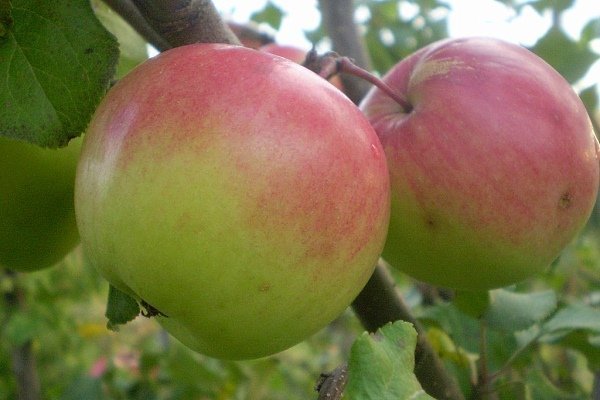

Knight
The variety was bred by the famous breeder Isaev Sergei Ivanovich. Two varieties of apple trees were used for breeding - Pepin Shafranny and Anis Polosaty.
The plant is vigorous, stocky, outwardly similar to a small oak. The branches are powerful and large, the crown is dense. The leaves are large, dark green. The fruits are medium in size, weighing about 200 g. The shape is rounded-conical, the peel is smooth, creamy with red stripes.
Fruiting begins in the third year after planting. With proper care, gardeners can harvest more than 230 kg of fruit per plant per season. Fruits are stored almost until May, retaining their presentation; they also remain suitable for raw consumption and for technical processing.
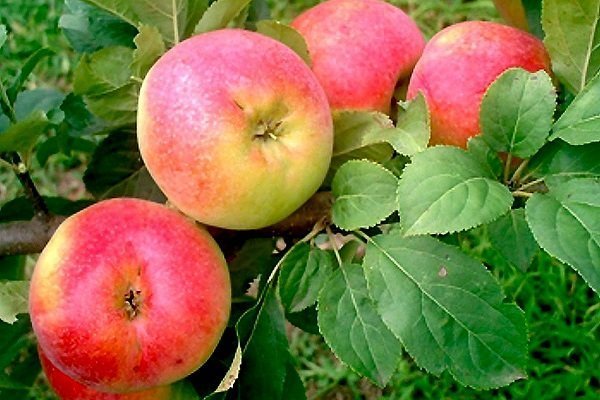

Renet Simirenko
It is not known exactly when the variety was received. The apple tree got its name in honor of the father of Lev Platonovich Simirenko. He believed that the cultivar was the result of an accidental crossing. The variety was added to the State Register of the Soviet Union in 1947.
The plant is tall, characterized by a wide-round spreading crown. The bark is dark gray, with an orange color on the sunny side. The leaves are elongated, ovoid, light green in color with a glossy surface. Fruits are medium or large, regular round shape. The peel is light green at technical ripeness, turns yellow during storage. The average weight of an apple is 150-200 g. The fruit pulp is creamy white, tender and juicy. The fruits are sweet, slightly spicy.
It is a high-yielding variety.140-170 kg of fruits are removed from one adult plant. Fruiting occurs 4-5 years after planting. The fruits ripen in the second half of September and mid-October. With proper storage, the fruits do not lose their qualities until the next year.
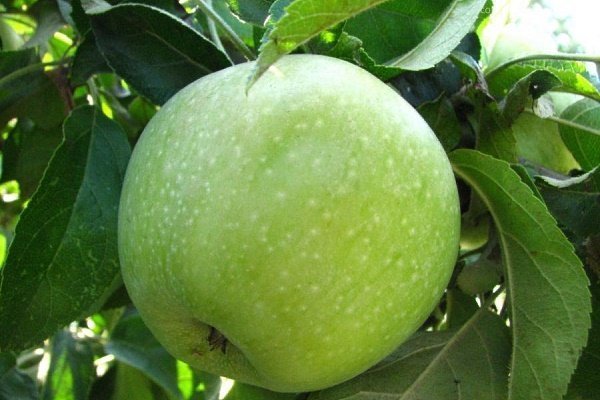

Antonovka
Nobody knows exactly how the Antonovka variety appeared. Some argue that this is an accidental hybrid of a cultivar with a wild forest apple tree. It is believed that the apple tree comes from the Tula or Kursk regions. The variety was first described by N.I. Krasnoglazov in 1848.
The plant is vigorous, has an oval crown, which becomes spherical and spreading as the plant matures. The bark of young branches and shoots becomes brown. The leaves are oblong, bright green. The fruits are small, their weight does not exceed 160 g. During the ripening period, the peel becomes green with a yellow tint. During storage, the fruits turn completely yellow. The pulp is light, sweet, the acidic taste is strongly pronounced.
Fruiting begins 7-8 months after planting. Full ripening of the fruits occurs at the end of September-beginning of October. The number of fruits increases as the tree grows. From a plant 20 years old, it is possible to collect up to 200 kg of apples per year. The fruits are stored for a long time, about three months. With proper care, the shelf life can increase up to 4 months.
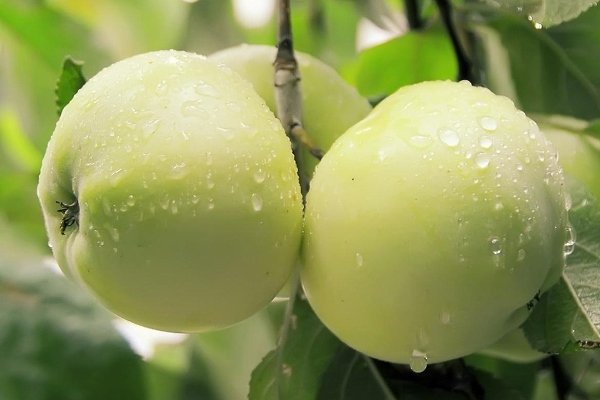

Antaeus
This is a winter apple variety obtained by breeders of the Belarusian Research Institute by crossing the Belorussian raspberry variety and the Newtosh and Babushkino hybrid. Antey was included in the State Register of Belarus as a particularly valuable variety in terms of productivity.
The plant is of medium height, does not exceed three meters. The crown has a pyramidal-rounded shape. The branches are light brown in color, and the young shoots are dominated by dark brown bark. The leaves are large, oval, dark green in color. The fruits are large, weighing on average 200 g or more. The shape is rounded-conical, slightly flattened. The rind is green. The pulp is greenish, juicy. The apples are sweet and sour, with a delicate aroma.
Fruiting begins in the third year after planting the seedling. The yield reaches 50 kg per plant. The variety is characterized by increased resistance to frost, medium resistance to pests and scab. The fruits are harvested in September-October. Apples fully ripen a few months after harvest. Stored until May next year.
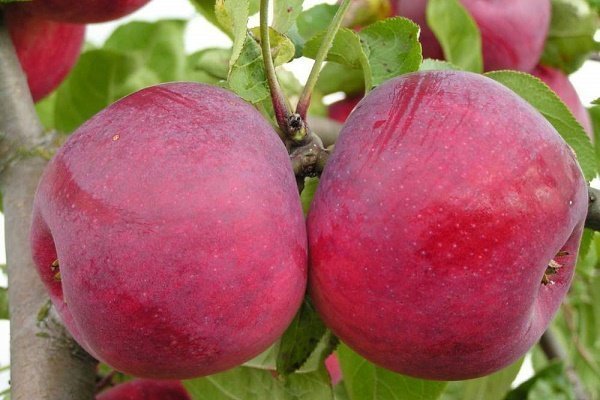

Black cancer
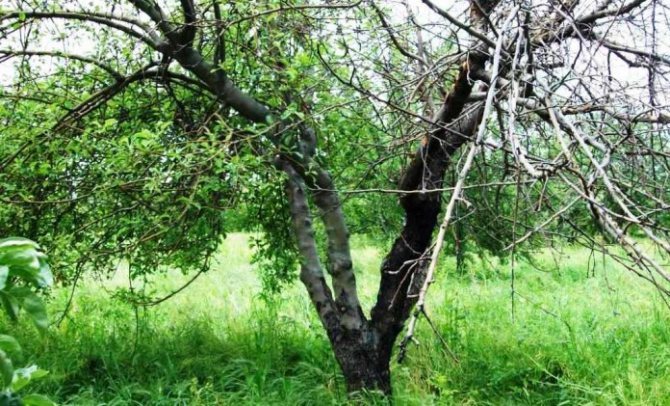

The causative agent of this disease is a fungus, it affects almost all parts of the tree. The main and at the same time the most dangerous form of the disease is damage to the bark of the trunk and skeletal branches.
Symptoms


- Black cancers appear as brownish-purple spots on the bark. It turns black, charred, covered with a network of cracks. At the next stages of the development of the disease, the bark completely dies and falls off.
- Pycnidia appear on the infected bark, they carry the spores of the pathogen. Pycnids look like small bumps.
- Infected areas occupy more and more territories, which leads to the sudden death of the skeletal branches of the tree and its death.
- The leaves, in turn, are covered with spots of a reddish-brown hue, often dry out and fall off.
- Infected apples develop brown spots.
- The fruits dry out, acquire a dark brown hue, or even turn black, pycnidia appear on their surface, which carry spores.
Methods of control and prevention
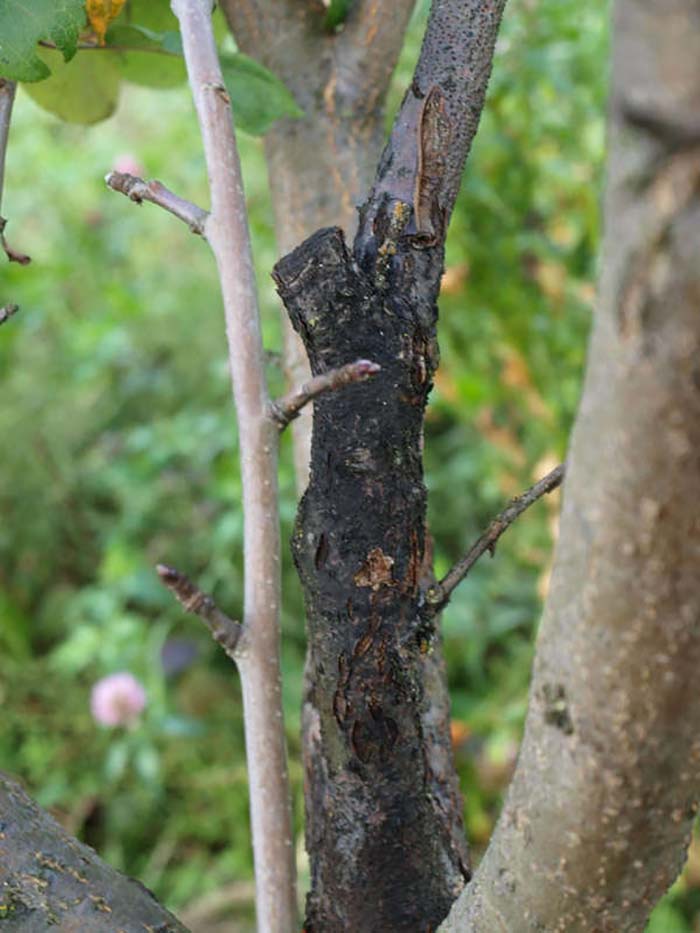

It is worth mentioning that it is weakened trees that most often suffer from this disease. In order to prevent the occurrence of such a dangerous disease, you need:
- Protect the bark from damage.
- Protect from frost damage and sunburn.
- Whitewash the trunks in spring and autumn.
- Carry out various agrotechnical activities.
- Water the trees in a timely manner.
- Prune and burn infected branches.
Spraying apple trees with fungicides, you can use the same ones that are intended for the treatment of scab.
It is necessary to cut the wounds with a knife, then you need to disinfect the surface of the tree.All strips that are collected on film or tarpaulin are burned.
The most delicious and sweetest
There are the best varieties that are especially appreciated for their sweet taste, excellent taste and marketability. These include several varieties that have been recognized by most gardeners.
Belarusian sweet
This is a fast-growing winter variety, bred by breeders of the Institute of Fruit Growing of the Republic of Belarus about 20 years ago. The variety was entered into the State Register of Russia in 2005.
The tree is medium-sized, grows quickly, reaching a height of three meters by the age of 8-9. Dominated by a rounded or rounded-conical crown. The fruits are large, weighing about 160-180 g. The shape of the apples is round, sometimes asymmetrical. The rind is smooth, dense, green-yellow in color. When fully ripe, the apples turn yellow. The light pulp is coarse-grained, semi-oily, tender, sweet and juicy. The aroma is light.
The fruits are removed from the tree in September-October. Full ripening occurs two months after harvest. The fruits are well stored until February.


Spartacus
The apple variety was bred at the Samara Experimental Station in the middle of the 20th century by the breeder S.P. Kedrin. At that time, the breeder was actively involved in crossing various types of apple trees. So he managed to breed this unique variety.
The plant is medium-sized, with a brown bark. Shoots are smooth, straight, brown-red. The tree does not exceed 6 meters in height. It has a wide, dense crown of a round-pyramidal shape. Leaves are medium, oval-oblong, green in color. Fruits are medium in size, weighing from 90 to 130 g, sometimes reaching 300 g. The shape is round. The peel is dense, shiny, yellow in color with stripes of a bright red hue. The pulp is fine-grained, tender. The taste is sweet and sour.
The fruits reach technical maturity in the first half of September. The tree begins to bear fruit 3-4 years after planting. Some plants begin to bloom as early as the second year. The advantages of the variety include high consumer and commercial properties.


Nectar
This is a columnar variety that appeared in 1987 at the Moscow Institute of Horticulture. Breeders N.G. Morozova and V.V. Kinchin were engaged in breeding. The seeds of the donor (gene) KV 103 were used in the selection. The apple tree received its official name in 1993.
The height of the tree does not exceed 2-2.2 m. The tree is columnar, the crown is compact. The leaves are large, elongated, green in color. The fruits are round, medium and large in size. One fruit weighs from 100 to 250 g. The peel is dense, white-yellow. The pulp is juicy, coarse-grained, white, sweet. The taste is honey.
About 9 kg of fruit can be obtained from a five-year-old plant. Productivity decreases significantly with age. The plant can bear fruit for up to 15 years, while it can grow up to 50 years. The advantages include the compactness of the plant. Of the shortcomings, a short shelf life is distinguished - no more than 1 month.


Korobovka
Korobovka is an old early summer variety of folk selection. SI Isaev was engaged in its breeding. The variety was first scientifically described in 1855. There is an assumption that the apple tree got its name due to the fact that the fruits were sold not by weight or by the piece, but in boxes, like berries.
The plant is medium-sized, cold-resistant. The crown is shaped like a broom. Shoots of a dark brown shade. Leaves are slightly curved, round-elliptical, dark green in color. The fruits are small, their weight does not exceed 40 g. The advantage is a pronounced aroma. The apples are flat-round, their rind is greenish-yellow with cherry-red stripes. The pulp is light, juicy, sweet.
The variety begins to bear fruit 5-7 years after planting. The crop is harvested for 10, sometimes 15 years. Full ripening of apples occurs in late July and early August. Up to 70 kg of fruits are obtained from one adult plant.
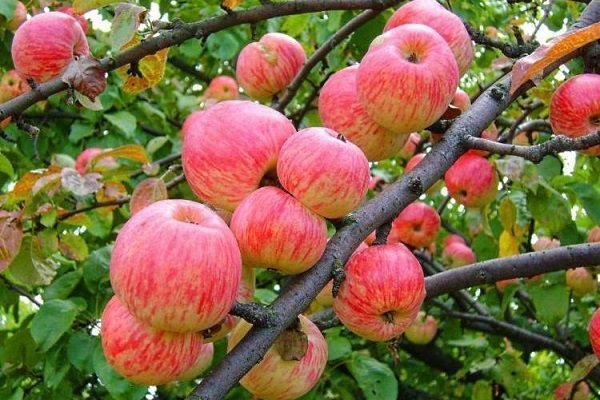

Lungwort
The breeding of this summer variety began to be dealt with in the 30s of the 20th century. The selection work was carried out by the famous biologist - Isaev S.I. Medunitsa managed to get by crossing two varieties - Cinnamon striped and Wesley.
The tree is tall, reaches a height of 4-5 meters, the crown is wide, powerful. Leaves are oval, long, dark green in color. Fruits are medium in size, weighing from 100 to 150 g. The rind is yellow-green with a red blush. The apples are rounded, slightly flattened. The pulp is light creamy, dense, juicy, sweet.
The plant begins to bear fruit in the third year after planting. The fruits ripen at the end of August. The average yield per tree is about 180 kg. The advantages of the Medunitsa variety include increased resistance to frost, scab disease.
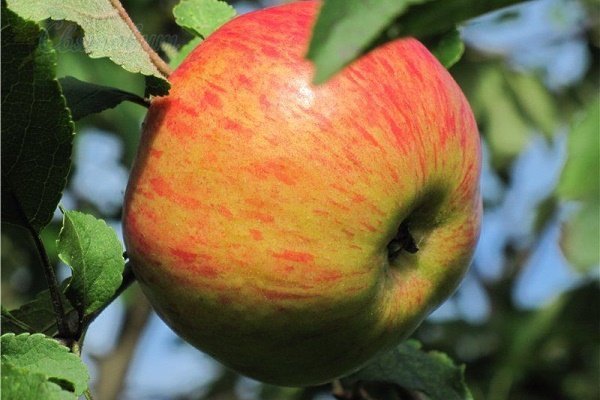

Reproduction
Apple-tree Royal Beauty
It is noteworthy that decorative apple trees are easily propagated by seeds. To grow a seedling in this way, the seeds must be thoroughly washed, then soaked for three days in water, which must be changed daily. Any growth stimulant can be added to the latter water. Then the seeds are stratified for 2 months - they are placed on the lower shelf of the refrigerator. After all the procedures, the seeds are planted in special boxes, or on a garden bed at a distance of 20 cm from each other.
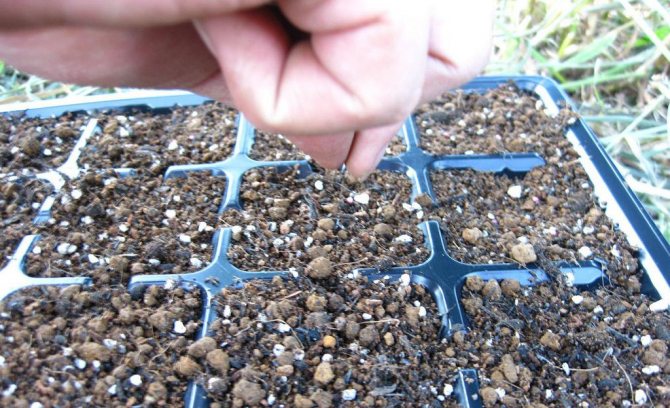

Sowing with seeds
You can act differently. The seed is washed in the fall and planted immediately in the ground. During the winter, it will go through the entire hardening period and in the spring the strongest seeds will sprout. The gardener will be able to choose the strongest from several. Or, if necessary, leave all the seedlings.
Cutting decorative varieties is not the most productive, but an acceptable method. In most of these apple trees, the survival rate does not exceed 5-15%, even when treated with growth stimulants. Therefore, experienced gardeners prefer the first breeding method, sowing seeds towards the end of autumn.
Green varieties
Apples with green peel are especially appreciated not only by gardeners, but also by those who know about the beneficial properties of fruits. The best varieties of apple trees include several varieties.
Granny Smith
The variety was bred in 1868. The first fruits were obtained in New South Wales. In 1935, the variety appeared in England, in 1976 - in the USA and Canada. The selection work was carried out by Mary Ann Smith, a national breeder, she managed to get the variety by pollination of an Australian apple tree with a wild French one.
The tree is medium-sized, is a natural semi-dwarf, has a spreading crown. The fruits ripen large, their weight reaches 300 g. The peel is rich green, the apples are round or slightly oval. There are brownish-red blotches. The pulp is light, juicy, sweet and sour.
Fruits begin to ripen at the end of September. Under the right conditions, the shelf life is long - until the next harvest. Care consists in regular pruning and feeding.
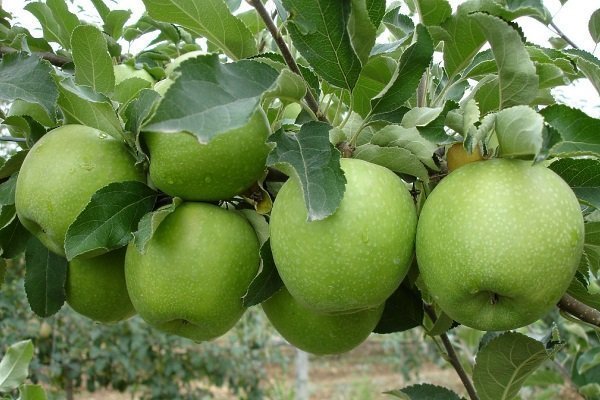

Golden Delicious
Mid-season variety of unknown origin. The seedling was accidentally found in South Virginia over a hundred years ago. After that, he was recognized all over the world. Gardeners love this variety for its ease and simplicity in growing and care.
In a plant, the crown has the shape of a cone; as it grows, it expands and acquires roundness. Leaves are oval, wide, bright green. Fruits are elongated, large, weighing up to 200 g. At the moment of technical maturity, the peel is light green; at full ripeness it becomes golden yellow. The apples are even, elongated, almost always the same shape. There are small subcutaneous dots of black color. The pulp is juicy, sweet. The fruit smells good.
The plant begins to bear fruit in the second or third year after planting. The harvest begins from mid to late September. The variety is characterized by high yield. Seven-year-old trees can produce 250-300 centners per hectare.
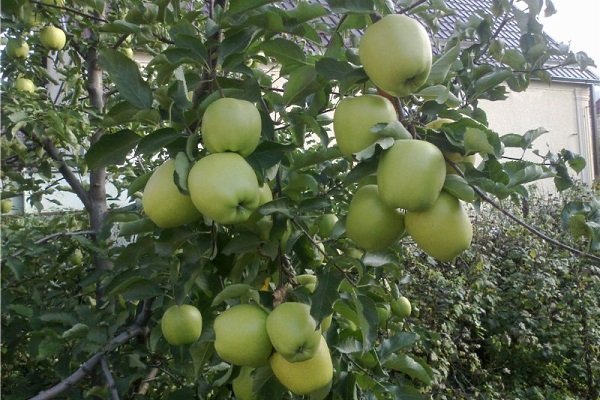

conclusions
- Apple trees can not only bring healthy fruits, but also be a worthy decoration of the garden.
- Thanks to the variety of ornamental varieties, trees can be matched in color and size.
- Most ornamental apple trees have unusual colors of flowers and fruits. It is also common to stain the leaves and bark of the tree.
- The fruits of most ornamental varieties are inedible, but they can decorate the tree even in winter.
- Ornamental apples can be eaten processed. However, some fruits can cause food poisoning.
- Ornamental apple trees are unpretentious to planting conditions, but they need abundant lighting for sufficient flowering.
Read about the features of a decorative pear.
Red varieties
Red apple varieties are to the liking of most gardeners. Fruits in the ripening period look colorful on the trees, decorating the garden. There are several of the best red apples.
Red Delicious
This winter variety was bred in the United States and derived from a spontaneous mutation on the Delicious apple tree. A branch with red apples grew on the tree - it was clearly visible. Scientists of Russia came to the conclusion that this is a valuable specimen and included it in the State Register of Breeding Achievements.
The plant is of medium size, it can reach a height of about 5.5 m. The crown has an oval shape, in an older age it becomes flattened, spherical. The branches are medium in thickness. The leaves are large with jagged edges, dark green in color. Fruits in the period of full ripening become a rich red hue, weigh from 100 to 300 g. The pulp is light green, juicy, crunchy, fragrant. The taste is sweet and sour.
Harvested from late September to late October. About 150 kg of fruits are obtained from one plant (ten years old). Due to the coarse peel, apples are stored for a long time and are transported over long distances without damage.
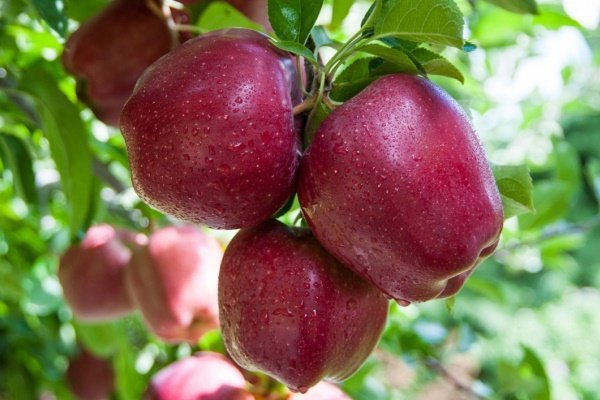

Florina
Florina is the result of the work of French breeders who used several varieties in the process - the seedling Malus floribunda 821, Starking, Rum Beauty, as well as the famous Golden Delicious and Jonathan. As a result of numerous repeated crosses of hybrids, it was possible to obtain a variety.
The tree is medium-sized, reaching a height of up to three meters. Plants grown on a dwarf rootstock grow up to two meters. Trees have a wide-round crown. The shape of the fruit is more cylindrical, sometimes rounded-conical, slight asymmetry is noticeable. Weight ranges from 110 to 150 g. The peel is dense, elastic, yellow with a deep red blush. The pulp is greenish-white, juicy, tender. The aroma is pleasant. The taste is sweet and sour.
The tree begins to bear fruit 4-5 years after planting. The yield increases over the years. From a five-year-old plant, gardeners remove from 5 to 10 kg of fruits, from an apple tree 10 years old they collect about 60-70 kg of apples. The advantages of the variety include high resistance to diseases and the possibility of long-term storage.
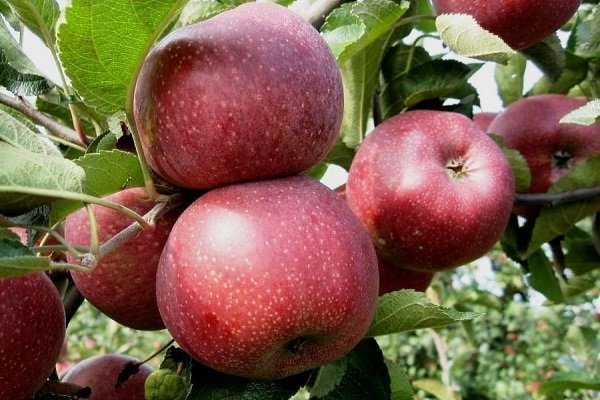

Jonathan
It is an old variety, developed in the early 19th century in North America. When crossing, the Aesop variety and the Spitzenburg apple tree were used. It is believed that the variety got its name in honor of Jonathan Hingley, whose wife developed a new variety from a Connecticut local variety used to make cider.
The trees are medium-sized. The plant is characterized by a wide, round crown, medium-sized leaves with a matte green surface. Fruits are medium, weighing 100-150 g. The peel is glossy, thin, green in color with a deep red blush. Ripe apples acquire a light yellow hue. The pulp is white with a greenish tinge, then turns light yellow. The taste is delicate and sweet.
The plant begins to bear fruit at 6, sometimes at 4-5 years. Young plants produce about 20 kg of fruit. Trees 10 years old or more give twice the yield. The fruits are harvested from mid-September to mid-October. Apples can be stored until March if kept cool.


Lobo
The apple tree was bred in Canada in 1906.For selection, seeds of the Macintosh variety were used - they were subjected to a free pollination process. In 1920, the variety became especially popular; not only ordinary gardeners, but also well-known breeders began to grow it.
The trees are medium-sized, have an oval crown. After the end of growth, the crown becomes round, thinned. Young shoots have a cherry hue. The leaves are large, bright green, ovoid. The fruits are large, weighing up to 180 g. The shape is round or slightly conical, elongated. The peel is yellow-green during the period of technical ripeness, and during ripening it acquires a red tint. The pulp is white, fine-grained. The fruits are sweet, slightly sour, juicy.
Plants begin to bear fruit in 3-4 years. Harvesting takes place at the end of November. Up to 380 kg of fruits are harvested from one adult tree. They are stored until January at a temperature of 2 to 7 degrees.


Gloucester York
The variety appeared in 1951 in Germany. Crossbreeding was carried out by German breeders using two varieties - Glockenapfrel and Richard Delicious. The apple tree not only received positive qualities from its parents, but also acquired increased resistance to frost. In Russia, the variety has become popular not only among gardeners, but also in the processing industry.
The tree is fast growing and has a pyramidal or high oval shape. The fruits are large, round, weighing from 180 to 200 g. The peel is light yellow with a crimson-red blush. The rind is thin and smooth. The pulp is creamy, dense, juicy. The taste is sweet and sour, the aroma is pronounced.
Fruiting occurs 4 years after planting. The crop is harvested at the end of September. From an adult apple tree, 40 to 75 kg are harvested. The crop is normally stored in a cool place for four months. Transport is well tolerated.


Diseases of the trunk of apple trees: their signs and treatment (with photo)
The most common apple tree trunk disease is root rot, with only scab rivals in prevalence. We offer you to find out all the necessary information about apple tree trunk diseases and their treatment so that this defeat is not taken by surprise.
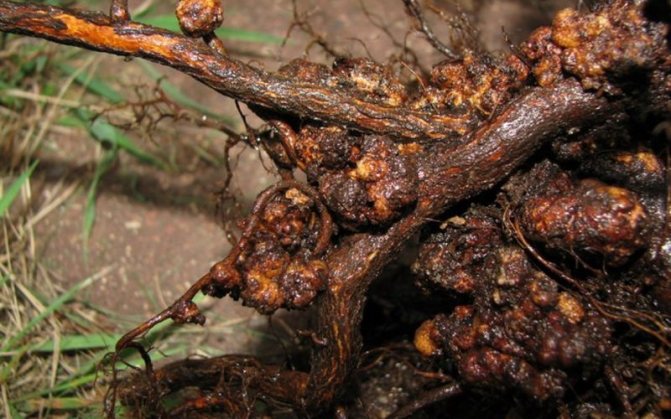

Root rot, or honey fungus, apple trees.
The causative agent is a mushroom Armillaria mellea (Vahl.) P. Kumm. (syn.Armillariella mellea (Vahl.) P. Karst.), causes peripheral wood rot. Honey mushroom grows on the roots of living trees and shrubs, as well as on stumps.
Under the affected bark of roots, butts, base of trunks and shoots, the fungus forms a network of black flat cords - rhizomorphs, with the help of which it actively spreads. On the mycelium, numerous fruiting bodies are formed in the form of yellow-brown caps with a stem and a filmy ring under the cap. The fungus persists in the wood, in the soil in the affected plant debris, penetrates the root system of trees and shrubs, causes the wood roots and trunks to die off, which is why the lesion is called peripheral rot. The main signs of this disease of apple trees are visible to the naked eye: various annular spots along the entire trunk, covered with a brownish bloom.
Control measures. Preventive spraying of trunks and branches with 1% Bordeaux mixture or its substitutes (HOM, Abiga-Peak). Removal and burning of affected dead trees along with roots. At the first signs of infection, the soil under the trees is spilled with a solution of a copper-containing preparation. For industrial cultivation in a nursery, the roots and butt of woody plants are treated with a tank mixture: foundationol (0.2%) + HOM (0.4%).
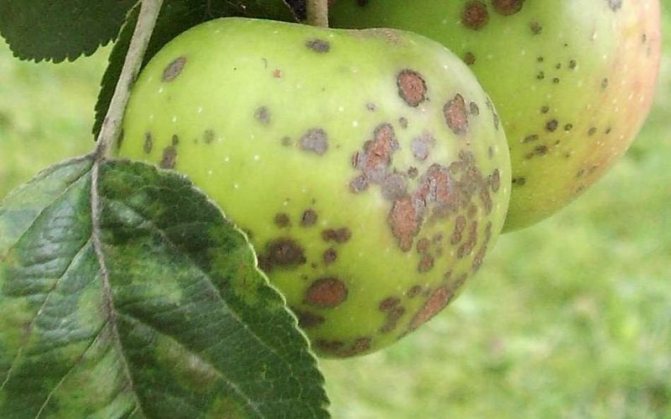

Apple scab.
The causative agent is a mushroom Venturia inaegualis Wint... with conidial stage Fusicladium dendriticura (Wallr.) Fuck. Dark green, gradually turning brown velvety spots appear on the leaves on the upper side, the leaves turn yellow and fall off prematurely. When infected in spring and early summer, the spots are large, later, with repeated re-infestations, they are small, barely noticeable. Spores re-infect the ovaries, less often young shoots, the fruits become stained and become unusable. With the massive spread of scab, the commercial qualities of the fruits, the decorativeness and winter hardiness of trees decrease. The development of the disease is favored by a wet, cold spring and an abundance of precipitation in summer. The causative agent is distinguished by a narrow specialization, that is, the fungus infects only the apple tree and does not spread to other trees.The infection persists in the affected plant debris.
Control measures. Collection and removal (possibly composting) of fallen diseased leaves. Spraying trees, starting from the green cone phase and, if necessary, in the summer, taking into account the waiting time, with one of the preparations: 1% Bordeaux mixture, HOM, Abiga-Peak, fast, rayok. It is easier to navigate in phases: before flowering and immediately after flowering.
Look at these apple tree trunk diseases in the photo, which shows the typical symptoms of a fungal infection:
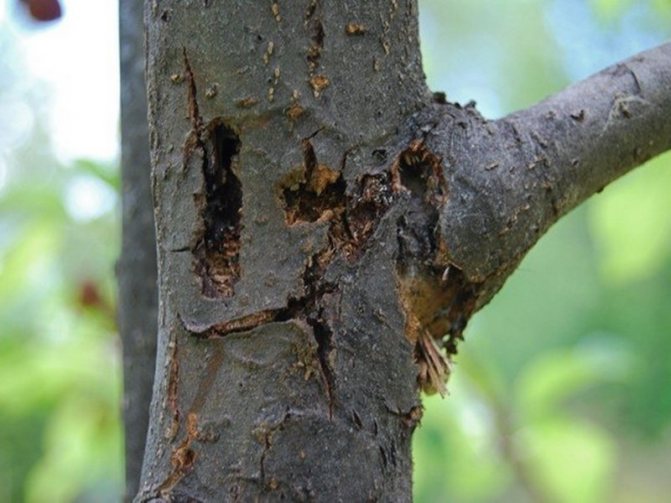

The best varieties of apple trees for central Russia
The middle zone of Russia is the European part of the country, characterized by a temperate continental climate. For the cultivation of apple trees and easy care for them, it is necessary to take into account the varietal characteristics that are inherent in the climate of temperate latitudes. There are several of the best apple varieties for central Russia.
Zhigulevskoe
The variety was bred by the breeder S.P. Kedrin, who crossed the Borovinka apple tree and the American Wagner variety. Zhigulevskoe is an autumn, high-yielding variety that has gained popularity in Russia.
The plant is medium-sized, has a wide-pyramidal or high-round crown, which acquires during the fruiting period. The crown is not very thickened. Shoots and trunk are colored dark brown. The leaves are large, oblong, ovoid, dark green in color. The fruits are large, weighing from 120 to 200 g. The apples are round, sometimes wide-ribbed. The peel is dense, oily, light yellow with a bright red blush. There are many gray dots under the skin. The pulp is creamy, coarse. The taste is sweet and sour.
The variety is characterized by early maturity and high yield. The first fruits appear in the 4th or 5th year after planting. Up to 240 kg of fruits are harvested from one tree. Depending on the weather, fruits ripen at the beginning of September.
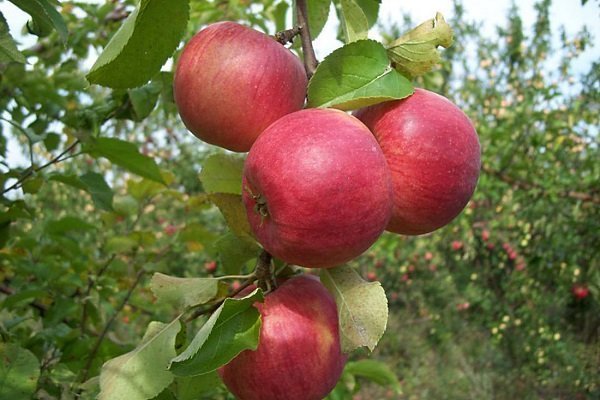

Star
The cultivar was bred by the Russian breeder Chernenko S.F., who managed to get the Star by crossing the Anis apple tree and the Pepinka Lithuanian variety. The variety was bred for many years until good results were obtained.
The apple tree grows large, reaching a height of more than 5 meters. The crown of the tree is spreading, weighty, rounded. The leaves are small, oval, serrated, dark green in color. Fruits are round, flattened, medium in size, weighing up to 130 g. The peel of apples is smooth, light green in color, there is a deep red blush along the entire surface of the fruit. The pulp is fine-grained, juicy. The taste is sweet and sour.
Fruiting occurs 3-5 years after planting the apple tree. Harvested from September to October. The peak yield begins at 7-10 years, at which time the plant produces 100 kg of fruit per season. In order not to face a drop in yield, the gardener must follow the rules of care.
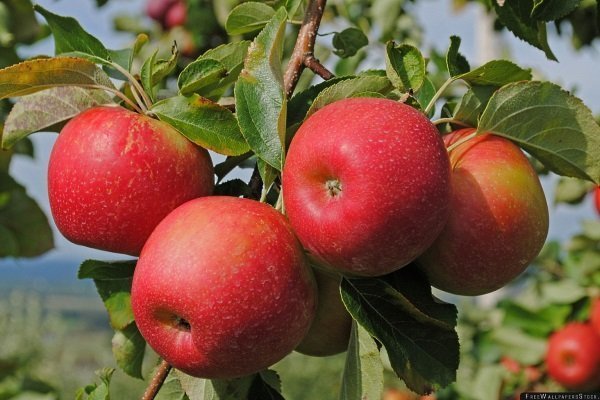

Delight
The famous breeder Isaev was engaged in breeding the variety. The scientist crossed cultivated and wild varieties of apples. In 1961, the breeder managed to achieve a good result, as a result of which the Uslada variety was obtained, resistant to severe frosts and scab.
The plant is medium-sized, its height reaches 3-4 meters, therefore it is often referred to as dwarf crops. A young tree has a round crown, then it becomes oval. The peel is green, with a bright crimson blush. There are noticeable small gray dots under the skin. The pulp is white, slightly pinkish. The fruits are large, weighing up to 170 g. The taste is sweet and sour, reminiscent of raspberries. The aroma is delicate.


Harvested in late August and early September. Fruiting begins 4-5 years after planting. The fruits ripen annually. On average, 60-80 kg of ripe fruits can be harvested from one apple tree.
If you know which varieties are considered the best for planting at one time or another, you will be able to grow a beautiful, powerful plant on your site, annually pleasing with a large number of delicious apples.Among the best varieties are autumn, winter, summer varieties and those varieties that have a green or red skin.
0
Scab
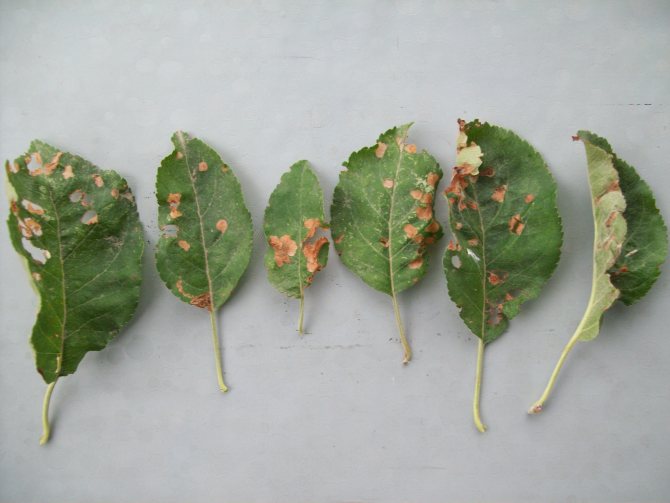

This disease is the most common in the world of apple trees. When infected with a pathogen, leaves, fruits and shoots are affected. In the spring, when the greatest amount of precipitation falls, scab is easy to find both on flowers and on kidney scales.
The disease promotes the penetration of the rot pathogen into the fruit, reduces the percentage of vitamins in the fruit. Also, the disease leads to the death of leaves, shoots and branches, which affects the harvest.
The emergence
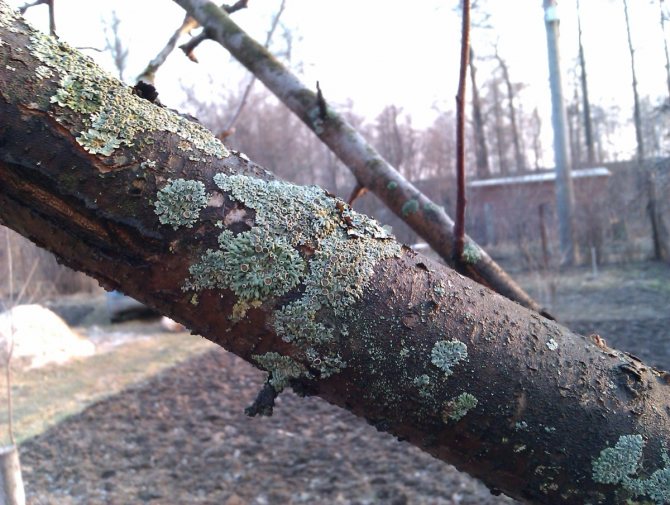

Basically, the disease first appears on the bottom of the leaf. The spots characteristic of the disease resemble a velvety bloom, which consists of conidia.
Conidia are formed on short conidial stalks of fungal spores. There have been cases when infected fruits and leaves died. The disease affects the developing fetus, contributes to the loss of buds and flowers.
Symptoms
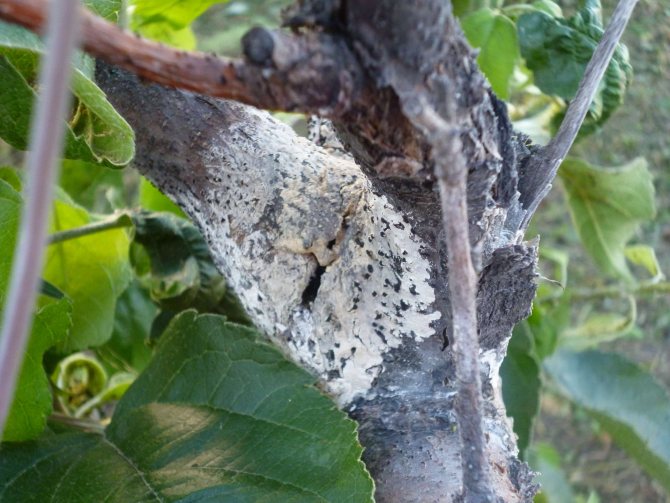

- Young apples are less resistant to disease. In the early stages of infection, the spots are small, but over time they will grow. But on the way to the inside of the fruit, the fungus encounters a cork layer that forms under the spots.
- The cork layer has a protective function. Infected apples fall off. Infection does not always progress quickly.
- There are cases when the symptoms of the disease were not noticeable during harvest, as a rule, the long-awaited symptoms appear during storage - small dark spots appear on the apples.
- During storage, only healthy fruits are not infected.
The disease is most often found on neglected, poorly ventilated plantings, gardens with supra-crown irrigation and tall trees - these are the best conditions for the onset of the disease.
Methods of control and prevention


To protect apple trees from scab, you must:
- prevent the spread of pathogen sources (Composting Fallen Leaves);
- spray ten percent ammonium nitrate on the soil of tree trunks;
- create conditions unfavorable for the disease;
- carry out timely chemical treatment.
The most popular means for processing fruit trees are "Skorom", "Rubigan", "Horus", "Sistan", "Ditan".
Classification
Non-infectious
Not passed on to others plants.
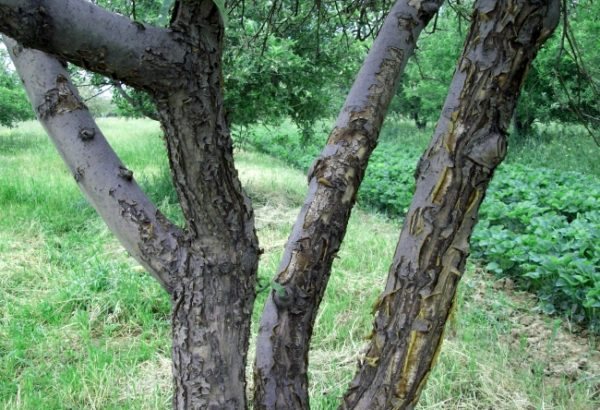

The apple tree trunk is infected.
The causes of these diseases - unfavorable growing conditions:
- Meteorological conditions (droughts, severe waterlogging, hail);
- Lack of various microelements in the soil;
- The soil is heavy, floating;
- The proximity of groundwater and lack of oxygen.
Advice! Make analysis soil.
Infectious
Transmitted from one plants to another:
- Mycoses - mushrooms;
- Bacteriosis - bacteria;
- Viroses are viruses.
Fungal
Pathogenic fungi overwinter in uncleaned fruits and foliage, bark.
Let's call illness:
- Fruit rot;
- Powdery mildew;
- Black cancer;
- European cancer;
- Scab;
- Rust;
- Brown spotting;
- Cytosporosis.
Apply:
- Agrotechnical techniques;
- Fungicides;
- Biologicals.
Bacterial
Causative agents - dangerous bacteria:
- Bacterial burn;
- Bacterial root cancer;
- Bacterial necrosis;
- Bacterial spotting.
Briefly about the techniques:
- Agrotechnical techniques;
- Try not to bring the disease with young seedlings;
- Treat with copper-containing preparations;
- Apply biologics-bactericides;
- Disinfect the instrument at all times.
Viral:
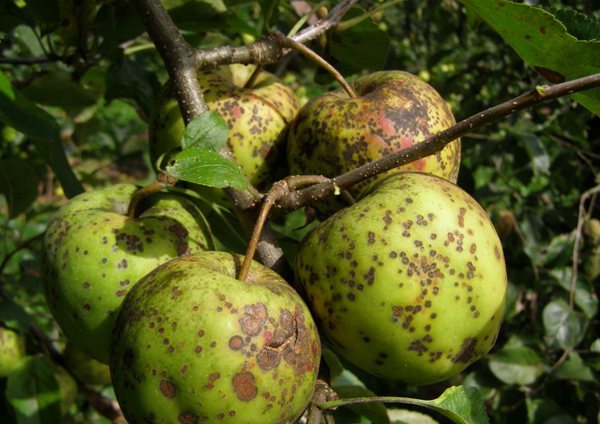

Scab-affected apple trees.
- The specks on the leaf turn into whole patterns, fruit deformed, the branches become fragile and ugly in shape;
- Some diseases are named: Mosaic;
- Starry cracking fruits;
- Paniculate;
- Rosette;
- Ugliness;
The benefits of apples
A fresh apple picked recently from the tree contains many nutrients that the body needs every day for normal, healthy life. The main and especially necessary among them are the vitamins retinol, a set of various beta-carotenes and ascorbic acid.
Due to the fragility of vitamin C, which is destroyed during long-term storage, grinding or heat treatment of the fruit, it is recommended to eat the apples raw. The amount of ascorbic acid in apples is determined by their maturity, variety and conditions in which the tree itself grows, therefore, significant fluctuations in this indicator are possible (in some apples it can be 3-5 times more than in others).
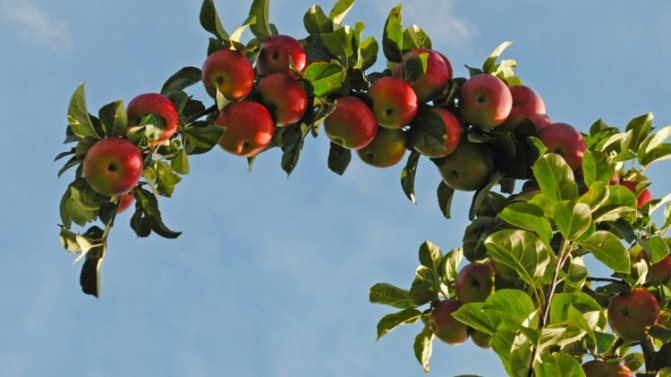

The presence of another category of complex organic compounds that are beneficial to the body - pectins - provides apples with a low glycemic index, although, as already mentioned, it is lower in green fruits than in red and yellow ones.
But the benefits don't end there. Apples contain the daily value of flavonoids, which play a significant role in metabolism, and enter our body only with plant foods. They change the activity of certain enzymes so that the synthesis of urinary is slowed down and the catabolism of formic acid is accelerated. It improves the condition of patients with gout, rheumatism, eczema and other skin and joint diseases.
Apples are a pleasure to quench your thirst, as, on average, these fruits contain 87% pure water. The most important substances for life - fats, proteins and carbohydrates - make up 0.4, 0.4, and 11% of an apple, respectively. Dietary fiber, or fiber, is considered separately - only six-tenths of a percent of them in the pulp and peel. A whole percent of the apple mass is given to pectins, and 0.8 g to ash compounds. Apples are a low-calorie food, since on average 100 g of an apple contains only 47 kcal.
Popular talks
- Report Cyril and Methodius 4, 5, 6 class message
Probably everyone knows that many years ago there was no writing on earth at all. A little later, the prince from Moravia decided to send his people to the emperor of Byzantium so that he could solve this problem. And almost immediately the ambassadors began to look for - Report Yarrow 2, Grade 3 Communication
Rumor has it that the Latin name for yarrow and a row of similar plants Achillea (Asteraceae, Compositae) comes from the name of the ancient Greek hero Achilles. Perhaps this is really so, because the words are very similar in composition. - Report on the city of Astrakhan
Astrakhan is a large city, which is most often called “The Pearl of the Lower Volga Region. It is the administrative center of the Astrakhan region. The city is located in the delta of the Volga River.
Landing
Most often, planting is carried out in the spring. There are no special requirements for a decorative representative of an apple tree, it is completely similar to planting ordinary ones. The pit is prepared in advance, with fertilizers and drainage.
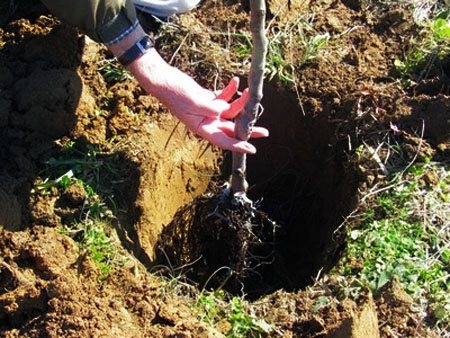

Planting a decorative apple tree.
If you choose the right place, then in the future, part of the work will decrease. Poor soil will not be the best place for beautiful trees, but it can also be fertilized, thereby brightening up this disadvantage. But places with excess moisture should definitely be avoided.
Foamiran flowers
It is believed that apple blossoms are a symbol of grace and beauty. It is for this reason, as we said earlier, that they are often used as decoration for bouquets and banquet rooms. In our article, you can find out how to make apple flowers from foamiran, which will undoubtedly complement not only the design of the house, but also your image.
Making an apple tree flower from foamiran with your own hands is quite simple. For this, in addition to free time and exposure, you will also need special stencils, thin wire, light-colored threads, semolina, stationery glue, hair spray and foamiran. First of all, to create an apple blossom, you need to prepare the stamens.To do this, you will need to cut and connect the threads that need to be attached to the wire. The loose ends of the threads must be dipped in glue and orange-colored semolina. The finished stamens must be left for half an hour for the products to dry.
To create the petals, use a stencil to mark their borders on the foamiran, and then carefully cut them out. From the finished product, you will need to form petals and attach to the wire. Foamiran apple flowers can be attached to beads, earrings, brooches and hair bands. Often they are also used to decorate rooms. Such flowers will perfectly complement and decorate not only your image, but also your home.
Structural features
Few people know, but apple blossoms adapt most quickly to a wide variety of weather conditions. It is for this reason that many gardeners choose to grow such fruit trees.
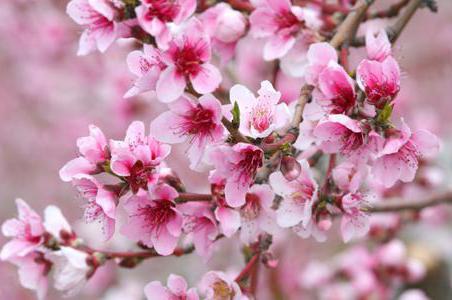

The structure of the apple tree flower is rather primitive. The inflorescence has pistils and stamens. This is its integral and most important part. The pistils and stamens are located inside the petals. Few people know, but the main difference between apple flowers is their bisexuality. The perianth is located around the stamens and pistils. It is from it that the corolla and calyx are formed. Blooming apple-tree flowers are white or pale pink. They are collected in inflorescences.
History
The apple tree has been a companion of mankind since time immemorial. The Tien Shan Mountains in the south of Kazakhstan are considered the homeland of the wild apple tree. It is believed that the apple tree ended up on the territory of Europe thanks to the Greeks, who developed intensive trade and business relations with the most distant peoples. Over time, the wild apple tree was cultivated by man: the best samples were selected, the growing conditions were improved.
In the 4th century BC. Theophrastus describes apple varieties bred by gardeners and the most popular in Hellas. Later, the Romans Cato, Varro, Callumella, Pliny and Virgil named 36 apple varieties in their works, indicating the techniques of grafting cultivated fruit plants.
The apple culture migrated to the population of the Western European region from Ancient Greece and Rome. By the beginning of the 16th century, the development of this branch of fruit growing accelerated. Less than a hundred years later, a detailed description of 60 apple varieties was given in Europe, among them those that are still cultivated in our time: Stettinskoe red, Calvil white, Short-legged red, Zvezdchatoye.
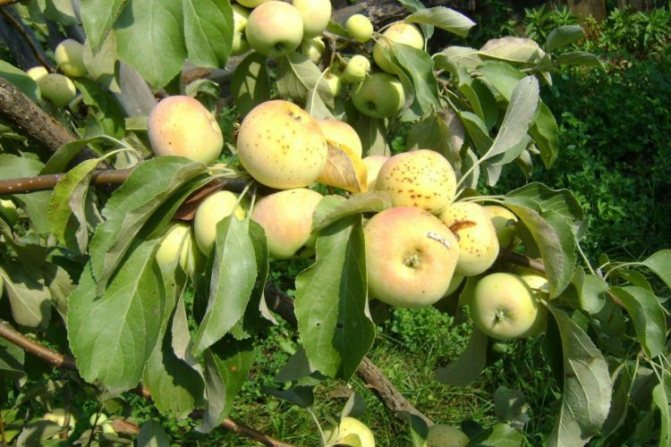

The apple tree got to the eastern and southern Slavs in the 10th century through another intermediary - Byzantium. Increased attention was paid to the cultivation of apple trees in the Kiev principality; the apple orchard founded by Anthony Pechersky (1051) was widely known. In the 12th century, Yuri Dolgoruky initiated the laying of apple orchards in the Moscow region. Apple culture entered a new stage of development under Peter I. The 18th century was marked by the discovery of the science of pomology and the activities of its founder, A.T. Bolotov, a detailed study of the varieties of apples and pears known at that time. Years later, the works of Michurin I.V. were devoted to the development of new varieties.
Healing properties
The fruits of apple trees are often called a natural treasure because of their content of vitamins C, B1, B2, P, E, as well as the minerals potassium, manganese and iron. Apples are used in the prevention of colds, treatment of malignant diseases and serious ailments. Thanks to potassium, blood pressure is stabilized. Thanks to calcium, tooth enamel and bone tissue are strengthened. Pectin improves complexion, prolongs the freshness and youthfulness of the skin. Apples are allowed for use by almost everyone due to their hypoallergenicity.
How to grow a currant tree
Many people think about the question of which apples are healthier, green or red. The answer lies in the difference in the content of trace elements in both fruits. Green apples have less sugar, more iron and vitamin C than red apples.
The benefits of apples during heat treatment are not lost, due to the small loss of nutrients. At the same time, in different cultures there are a huge number of recipes containing apples among the ingredients. What can be made from apples? Anything different: juices, cider, baby puree, jam, pancakes, marshmallows, charlotte and so on and so forth.
Interesting! When growing apple trees, not only fruits are used, but also leaves, flowers and seeds.
Apple leaves contain a large amount of vitamin C. When consumed regularly, it will help restore vitality, overcome depression and strengthen the body's defenses.
The leaves also contain:
- copper;
- vegetable acids;
- iron;
- zinc;
- molybdenum.
Often, doctors prescribe apple leaf tea to patients as an anti-inflammatory agent for diseases of the upper respiratory tract.
The flowers of the apple tree also contain a huge amount of trace elements and vitamins. Their tea is used to prevent the formation of cancer cells, and tincture as a medicine against gastrointestinal diseases.


Eating apple seeds should be treated with more caution.
The use of apple seeds should be treated more carefully. They contain a very important and rare vitamin B17. It prevents cancer cells from multiplying and reduces body fatigue. They also contain iodine, the deficiency of which leads to a deterioration in mood, decreased memory functions, headaches, and distraction of attention. Doctors recommend replenishing half of the daily intake of iodine with 5 apple seeds per day.
On a note! Since long-term storage of apple seeds is impossible, you can make a mixture of ground seeds with honey in a 1: 2 ratio and consume it 1 teaspoon per day, not exceeding the norm of 6 grains.
What can be made from apples for beauty in life - apple seeds are added to scrubs, creams and face masks, because the beneficial substances in them help smooth out wrinkles.
Contraindications and side effects
Despite the healing properties of the leaves, flowers, fruits and seeds of the apple tree, there are still contraindications.
So, fresh or pickled fruits should not be taken with diseases of the gastrointestinal tract and kidneys due to the risk of exacerbation of ulcers. In this case, it is better to eat baked fruits or choose sweet varieties of apples. To avoid stomach fermentation, it is best not to consume apples at night.
Infusions and decoctions from apple leaves should not be taken by people with increased blood clotting, chronic constipation and thrombophlebitis. Pregnant women should take such drinks only after consulting a doctor.
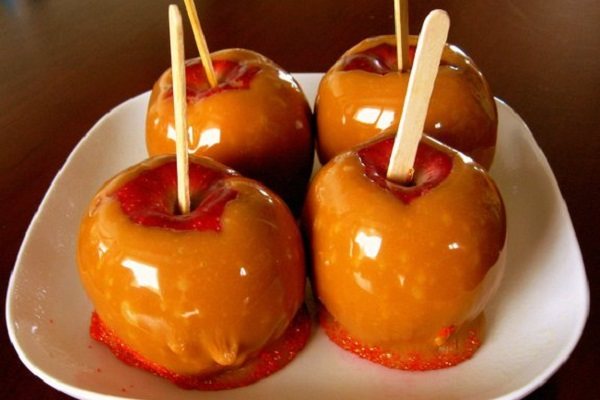

It is better to eat baked fruits
If, by consuming apple seeds, you exceed the norm, you can get poisoning. The fact is that the seeds of apples contain amigalin glycoside and, when it breaks down in the stomach, hydrocyanic acid is formed, which belongs to the strongest poisons - cyanides. However, the body is able to neutralize a small dose.
Signs of hydrocyanic acid poisoning:
- vomiting;
- salivation;
- loss of consciousness;
- sudden changes in heart rate and blood pressure;
- Strong headache;
- breathing problems, choking.
Important! If these symptoms are found after eating apple seeds, it is necessary to urgently rinse the stomach and call an ambulance, because an overdose of hydrocyanic acid can lead to death.
If a lot of apples are consumed per day, it is worth cutting out seeds from them, eating only juicy pulp.
It is worth noting that during heat treatment, the poison is destroyed. For this reason, apple jams and compotes with seeds are not dangerous for the body.
Bacteriosis


The causative agents of the disease are gram-negative bacteria. The disease is brought in with contaminated instruments. The incubation period begins in early spring.
Symptoms


Bacteriosis is characterized by dark watery spots on the bark, leaves and apples. They darken and char, but do not fall off.
Methods of control and prevention


- seedlings should be purchased only in proven places and inspected for diseases;
- disinfect the soil with a solution of copper sulfate;
- spray a diseased tree with 5% Bordeaux liquid, or products containing sulfur (EDG, Cumulus DF).
To prevent further spread of the disease, infected branches are cut and burned, and the wound is smeared with garden varnish. It is imperative to disinfect instruments.
Signs of mineral deficiency
As in situations with diseases - external signs indicate a lack of one or another trace element (discoloration of foliage, their deformation, wilting, poor growth).
May be:
- From poor illumination of the crown, temperature fluctuations;
- Impact pests;
- Excess of some elements.


Pests on the apple tree are aphids.
Seed germination process
It is believed that one of the most primitive trees is the apple tree. Unisexual flowers can self-pollinate. After this procedure, fruits begin to form. It is worth noting that the apple blossom also develops seeds that promote reproduction.
Few people know, but seed germination is a long and complex process. This procedure requires certain conditions. For apple seeds to germinate, they need water, oxygen and a certain temperature regime.
What is an apple?
An apple (lat. Pomum) is a closed multi-seeded fruit that is produced by plants of the Apple subfamily of the Rose family. Usually apples are called fruits of the domestic apple tree (Malus Domestica), descended from its forest variety (Malus Sylvestris). The same type of fruit has, for example, pear, quince, mountain ash. And the drupe-like apple, that is, enclosed in a hard lignified shell, is found in hawthorn, cotoneaster and other plants.
Important! By its structure, an apple resembles a berry. It is formed from the lower ovary, which arises from the presence of hypanthium - an extended receptacle, fused with the perianth and the base of the androeum.
Rust


Rust is caused by a fungus that develops on two plants. The first host of the disease can be a juniper, and only then the fungus passes to the apple trees.
Symptoms


- In spring, round orange or red spots appear on the leaves.
- Closer to August, growths appear - etsidia, which are an accumulation of fungal spores.
- Etsidiospores fall on conifers, or on a common juniper, where they grow and develop. Etsidiospores are grouped into mycelium, which can survive the harsh winter.
- In early spring, growths (on juniper) appear on the infected areas. These are clusters of spores that have survived the winter. Some of them get on the leaves and infect them.
If the apple tree is infected with rust, then, most likely, it will not give growth, the fruits will stop in development and will soon fall off.
Methods of control and prevention


- destruction of the juniper, which is located next to the apple trees;
- spraying apple trees with a 1% solution of Bordeaux liquid;
- but still, the best result is given by preparations containing sulfur.

